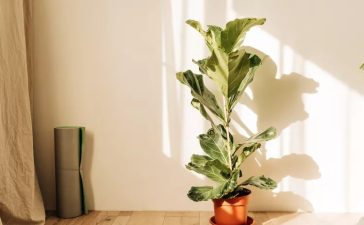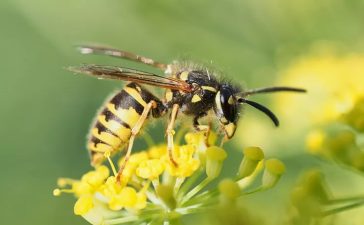Radiant Mums: A Guide to Caring for Your Fall Chrysanthemums
Chrysanthemums, commonly known as mums, are cherished for their vibrant beauty and captivating sweet and spicy fragrance, making them a beloved choice for the autumn season. With a splendid array of colors, including yellow, white, orange, burgundy, bronze, purple, and pink, mums add a burst of charm to fall gardens. These hardy flowers are well-suited to cooler temperatures, and while they may begin blooming in late summer, their true glory comes alive during the fall.
Mums are a fantastic addition to front porch displays and fall flower beds. Below, you’ll discover how to care for mums, ensuring they remain resplendent throughout the season and return year after year.
How to Care for Mums
Mums, known for their resilience, can thrive and even become perennial flowers with proper care. Here are the essential care requirements to ensure their longevity:
Light Mums have specific lighting needs depending on whether they are grown indoors or outdoors. For outdoor mums, they require full sunlight, which equates to at least 6 hours of bright light daily. On the other hand, indoor mums flourish with bright, indirect light. Mums are also photoperiodic, meaning they bloom when exposed to specific light conditions. They typically flower in the autumn or fall when they experience 16 hours of darkness and 8 hours of daylight.
Soil When planting mums outdoors, it’s crucial to provide them with well-drained soil, whether it’s loam-based, clay-based, or sand-based. For container gardening, you can use a potting mix comprising 1 part good-quality potting soil, 1 part coarse sand or another draining material, and 1 part peat moss or coco coir. Aim for a slightly acidic to neutral pH level for the soil.
Water Mums, especially those in direct sunlight, require adequate irrigation. It’s best to water them once a day in the evening to ensure the soil has time to absorb moisture before the sun’s heat dries it up. Ensure that the water penetrates 6 to 8 inches into the soil for mums planted in the ground. In containers, aim for approximately 1 inch of water per week. Regularly check the soil’s moisture level and adjust your watering schedule accordingly.
Temperature and humidity
Chrysanthemums have specific temperature and humidity preferences that contribute to their optimal growth. Here are the key temperature and humidity considerations for these lovely flowers:
Temperature Chrysanthemums are cold-hardy and can thrive in USDA gardening zones 5 to 9. Some varieties, such as Mammoth Daisy, exhibit even greater cold tolerance, enduring temperatures down to USDA zone 3. When cultivating mums indoors or within a greenhouse, it’s essential to maintain a temperature range of at least 20 degrees Fahrenheit as a minimum and 90 to 95 degrees Fahrenheit as a maximum. However, the ideal temperature for chrysanthemums falls between 62 and 72 degrees Fahrenheit.
Humidity Chrysanthemums appreciate a humid environment to support their growth. Ideally, humidity levels should fall between 70% and 90%, which is relatively easy to achieve in a greenhouse but can be more challenging indoors. If you’re caring for mums at home, target a humidity range of 40% to 50%. Anything below this range can negatively impact the plants, causing them to suffer. Humidity levels can also influence the size, growth, and ultimately, the quality of the blooms.
Feeding your chrysanthemums with the right fertilizer is essential for their healthy growth and beautiful blooms. Here’s a breakdown of the fertilization guidelines for mums:
Liquid Fertilizer:
- When grown in containers and using a liquid fertilizer, feed your mums once a month.
- Start this feeding regimen at least a month after planting the seedlings.
- Stop fertilizing with liquid once the flower buds begin to open to avoid overstimulating growth.
Slow-Release Fertilizer:
- If using slow-release fertilizers, apply them every six to eight weeks.
- Commence this fertilization schedule at least a month after the initial planting, ensuring it ceases before the mum plants start blooming.
Outdoor Fertilization:
- For outdoor mums, the fertilization frequency can vary based on your soil’s fertility.
- In well-maintained organic gardens, consider composting the soil when planting the mums.
- Depending on the soil’s nutrient levels, you may need to supplement with additional compost a few weeks before the plants begin to blossom.
Recommended Fertilizer:
- Tammy Sons suggests using liquid Osmocote as it is a gentle yet effective choice.
- Apply this liquid fertilizer once a month during the active growing seasons to promote robust and beautiful blooms.
By following these fertilizer guidelines, you can help your chrysanthemums thrive and produce stunning, vibrant flowers.
Types of Mums
The Chrysanthemum genus encompasses a diverse array of approximately 40 species, each with its unique characteristics. Here are some of the most popular types of mums, as described by experts:
Anemone Chrysanthemum: These mums are known for their raised, cushion-like centers.
Quill Chrysanthemum: Characterized by their long tubular-shaped petals.
Spider Chrysanthemum: These mums have elongated petals that resemble spider legs.
Irregular Incurve Chrysanthemum: Featuring florets that curve upward towards the flower’s center, with lower petals forming in an irregular pattern.
Reflex Chrysanthemum: These mums exhibit florets that curve downward, and their bloom’s center is slightly flat.
Regular Incurve Chrysanthemum: Known for their petals that curve tightly inward, forming a ball or sphere shape.
Intermediate Incurve Chrysanthemum: These mums have petals that are loosely curved upward, with a less tightly shaped appearance compared to regular incurve mums.
Pompon Chrysanthemum: These mums are recognized by their globular-shaped petals that incurve and fully cover the center of the flower.
With such a variety of mum types, you can choose the ones that best fit your preferences and garden design for a stunning and diverse display of chrysanthemum blooms.
Pruning
- First Pinch (Late May): When the plant has grown approximately 6 inches, trim it down to a height of 2 to 3 inches. This encourages the development of lateral shoots.
- Second Pinch (When New Shoots Reach 6 Inches): Once the newly promoted shoots reach around 6 inches in length, trim them back again to 2 to 3 inches. You can continue this pinching process until mid-July.
- Cessation of Pinching (Mid-July): Stop pinching the mums around mid-July as they will be in the bud-producing stage, and you want to allow them to form buds freely.
- Post-Blossom Pruning: After your mums have bloomed, and the flowers have withered, it’s time for a more drastic pruning. As soon as the leaves turn yellow and begin to dry up, trim the plant down to nearly ground level, leaving it at about 2 to 3 inches tall.
By following this pruning regimen, you can help your mums thrive, ensuring a profusion of blossoms and healthy, perennial plants.
Propagating mums can be done in the spring using seeds, cuttings, or division. For seedlings, plant them after the last frost in May or early June. For cuttings, dip stems in root hormone and plant them in a perlite and compost mixture. Division involves cutting and replanting sections with roots.
Growing from seeds requires trays with well-drained potting mix, started 6 to 10 weeks before the last frost, typically in February or March. Seedlings need humid but not wet soil at 70 to 75°F, and they should be moved to well-lit areas with indirect light before planting in containers or the garden.
Potted mums from stores are often florist mums, less hardy than garden mums. Garden mums thrive in zones 5-9. You can transplant garden mums to larger containers for overwintering in colder zones. Indoor mums need bright, indirect light and thorough watering.
To overwinter mums, spread mulch or straw around the base, or bury potted mums in the ground and add mulch. This helps them survive the winter and become perennials.
Mums can face pests and diseases, including aphids, leaf miners, mites, and fungal infections. Common issues include lanky stems due to too much shade, woody stems from poor watering, and leaf discoloration due to various factors. Mums typically bloom from late July through October due to reduced daylight in the fall.
You Might Also Like
A Comprehensive Guide to Caring for Your Fiddle Leaf Fig
The fiddle leaf fig has been a reigning star in the world of indoor plants for at least five years...
Expert Tips on Choosing and Caring for Indoor Trees
Do you have a corner in your home that's crying out for a touch of green? Indoor trees can be...
Tips from Experts to Prepare Your Yard for a Green Spring
While summer is often seen as the peak season for gardening and lawn care, it's important to remember that each...
Expert Tips for DIY Yellow Jacket Traps
"If you've been dealing with unwanted guests in the form of pests near your home or garden, you might be...











